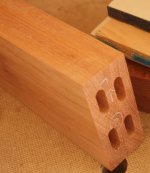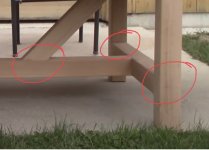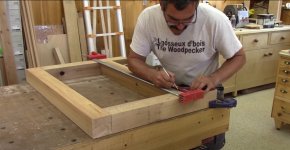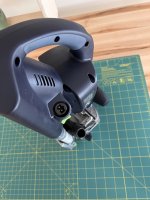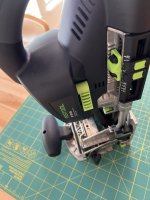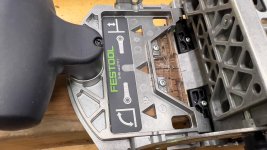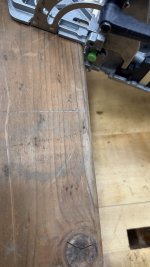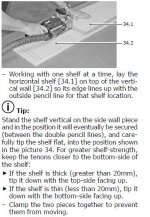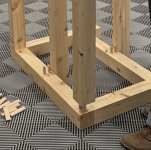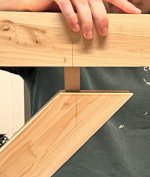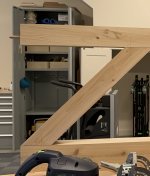aCircle
Member
- Joined
- Nov 24, 2020
- Messages
- 46
Hey FOG! Two questions for you this morning about the DF700.
I’m making a version of the table featured in the (delightful) Woodpecker episode 194. Link.
I’ve got the DF500 and managed somehow to convince myself this project would be the start of a beautiful thing and I needed the DF700 as well. There are two techniques I can’t quite figure out.
First: the stretchers used to brace near the bottoms of the legs. Since I’m putting two 12x100 dominos in each leg, I need to figure out how to accurately space both mortises in the middle of the leg. I know there must be an easier way to do this, but I can’t quite figure it out myself or get the phrasing right to find a video that shows the technique. Thoughts?
Second: placing dominos perpendicular to each other at the top of each leg. The issue here is that the mortises for attaching the legs to the apron/stretcher (?) intersect in the middle of the leg. As far as I can tell, Alain puts in one set of dominos, lets it dry, then cuts the second set — through part of the now-glued dominos. My questions are (1) is that the technique here, and (2) if so, is it a recommended technique, and (3) are there other ways to do this?
My material for the base assembly is some gorgeous 4x4 Maine cedar from a nearby mill, milled up to 3-3/8” x 3-3/8”.
Curious to hear the thoughts from the group. Thank you for the help!
I’m making a version of the table featured in the (delightful) Woodpecker episode 194. Link.
I’ve got the DF500 and managed somehow to convince myself this project would be the start of a beautiful thing and I needed the DF700 as well. There are two techniques I can’t quite figure out.
First: the stretchers used to brace near the bottoms of the legs. Since I’m putting two 12x100 dominos in each leg, I need to figure out how to accurately space both mortises in the middle of the leg. I know there must be an easier way to do this, but I can’t quite figure it out myself or get the phrasing right to find a video that shows the technique. Thoughts?
Second: placing dominos perpendicular to each other at the top of each leg. The issue here is that the mortises for attaching the legs to the apron/stretcher (?) intersect in the middle of the leg. As far as I can tell, Alain puts in one set of dominos, lets it dry, then cuts the second set — through part of the now-glued dominos. My questions are (1) is that the technique here, and (2) if so, is it a recommended technique, and (3) are there other ways to do this?
My material for the base assembly is some gorgeous 4x4 Maine cedar from a nearby mill, milled up to 3-3/8” x 3-3/8”.
Curious to hear the thoughts from the group. Thank you for the help!


